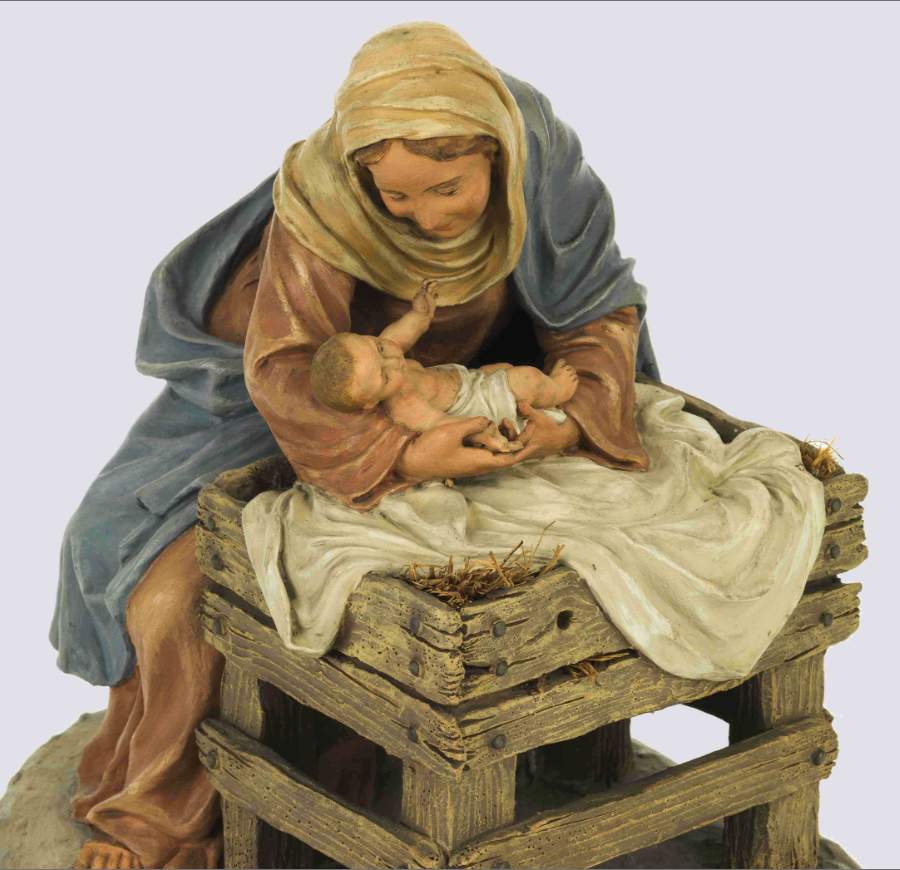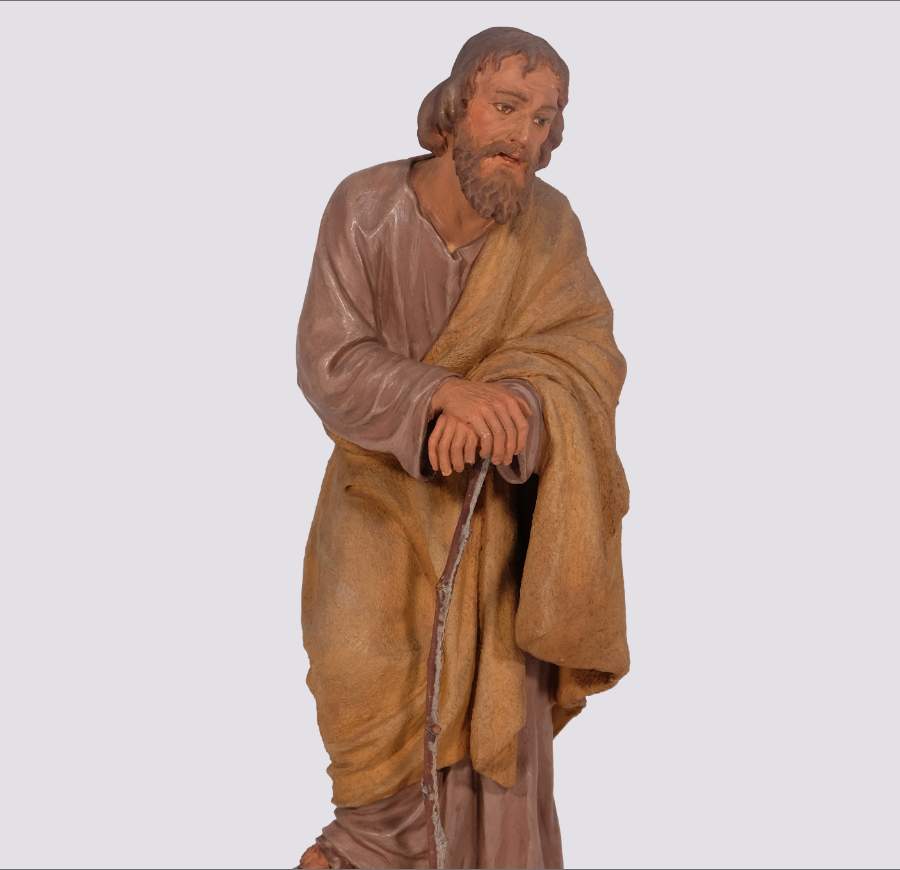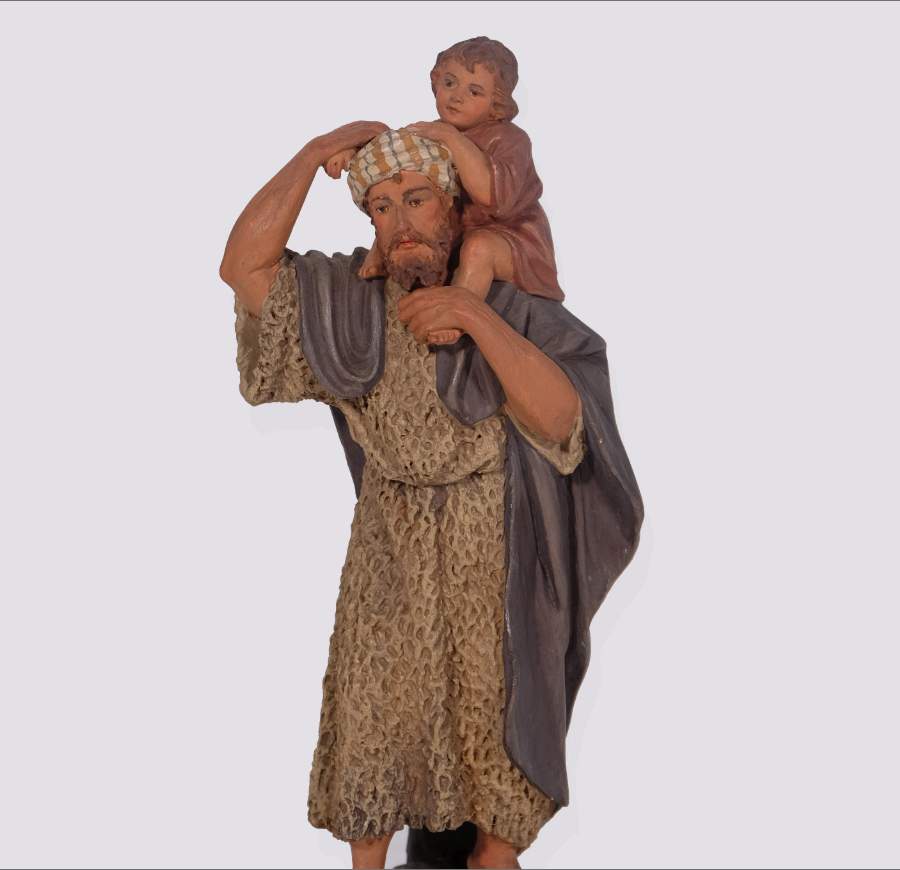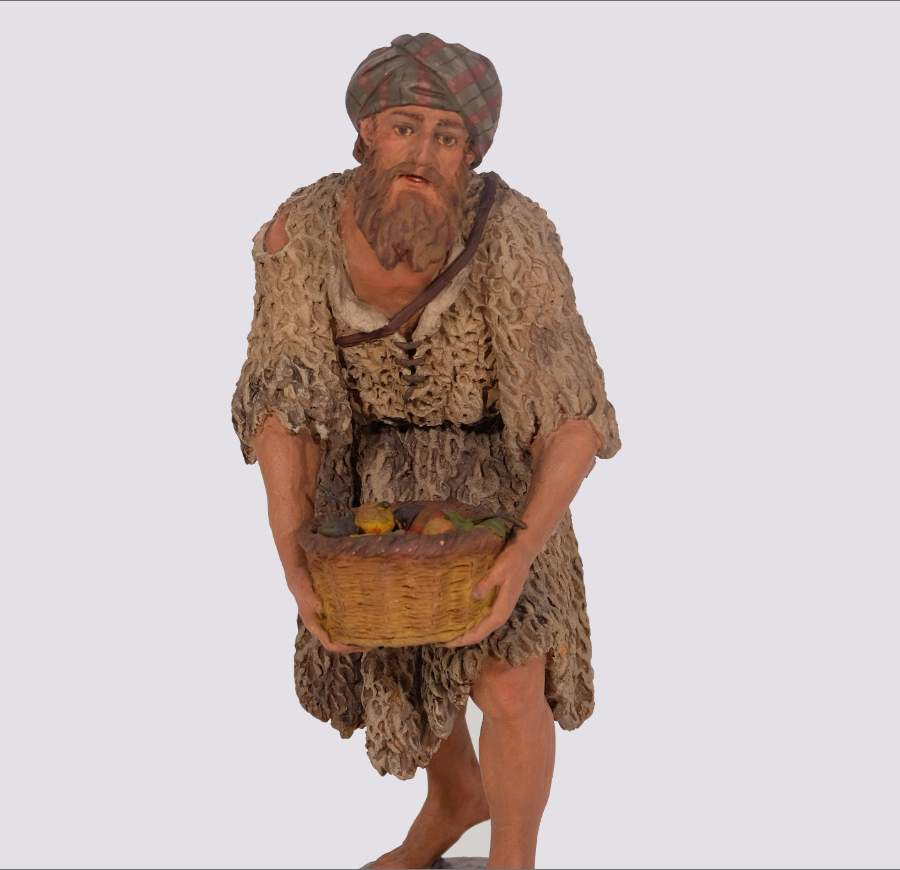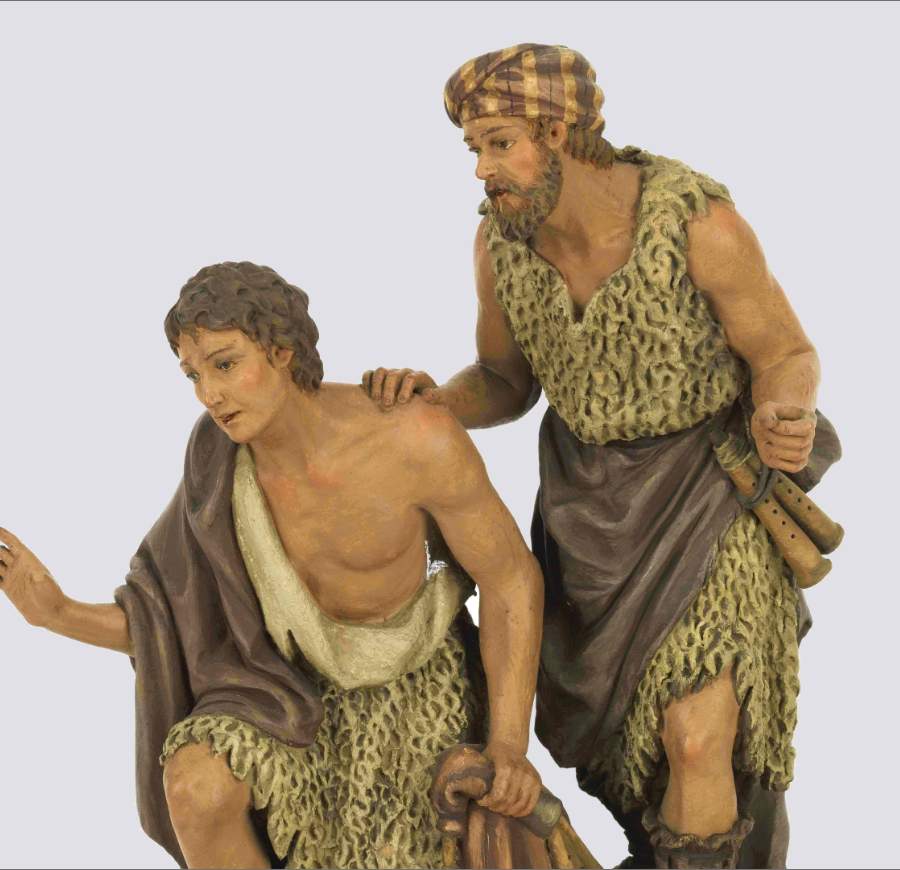Martí Castell Martí
10 December 2018 – 5 February 2019
Every year, during the Christmas period, we exhibit nativity-scene pieces from the museum's magnificent collection.
The Castells family workshop began with Martí Castells Martí (Barcelona, 1873-1937), who initially specialised in carpentry but soon applied himself to making Nativity scene figures that he later sold at the Santa Llúcia Fair, where he had his own stall.
For over fifty years, he created a huge number of figures of different types and sizes, using a technique known as “a palillo"; that is, hand crafted in very precise detail as a single piece. The polychrome of these pieces, done with oils, is also by the artist.
His figures radiate a realist classicism, as much in their proportions and detail as in the attention paid to their expressions and clothing. Biblical characters, in particular Hebrew shepherds, with their distinctive sheepskin jackets featuring the “palillo” working, are the artist’s trademark pieces.
Related pieces
Other pieces that may interest you ...
Faces
2019
A reflection on the distinctness of faces and their representation in objects. What do the gazes of the images give back to us?
Further informationShibui
2018
An introduction to the concept of non-western beauty, very rooted in Japanese culture and with a notable presence in ceramic objects.
Further informationMuseums, objects and religion
2019
A reflection on the deconsecration and reconsecration of religious objects when they become part of a museum collection.
Further information




